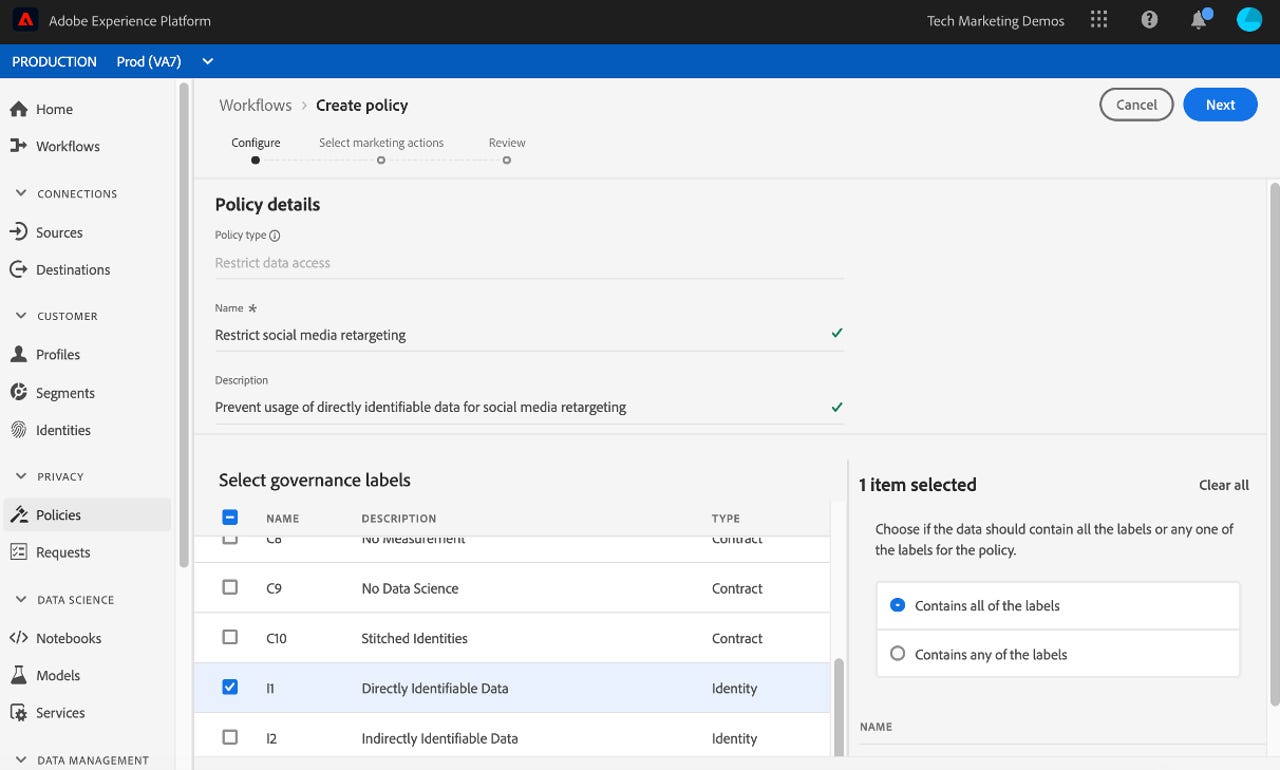Adobe makes CDP data governance tools generally available

Adobe on Wednesday announced the general availability of data governance tools in its Customer Data Platform (CDP). The platform is designed to help marketers combine known customer data with pseudonymous data (customer data that's been separated from the customer's identity). The data governance tools can help marketers ensure they're using that combination of data responsibly.
"It's one of those things that isn't the sexiest thing for marketers but may be the one that keeps some of them up at night," Matt Skinner, senior manager of product marketing at Adobe, told ZDNet.
Data governance is top of mind for marketers right now for a few reasons: First, organizations are still adjusting their data strategies to relatively new laws like GDPR in Europe and the California Consumer Privacy Act. Additionally, the broader digital landscape is changing for marketers -- browsers, for instance, are beginning to block third-party cookies. Amid all these changes, COVID-19 has made digital commerce and online marketing more important than ever for many brands.
The data governance tools within Adobe's CDP are designed for an organization's "data steward" -- anyone who may be responsible for setting data privacy policies, whether they sit in marketing, legal or another department. The tools allow them to establish policies for labeling and handling data without any IT expertise.

The CDP includes a privacy console, from which a data steward can apply out-of-the-box labels or build their own custom labels to classify data. Once data has been labeled, they can set data usage restrictions by defining marketing use cases for that data. There are also enforcement capabilities to prevent the misuse of data -- the platform will automatically enforce usage policies, and if there's an attempted violation, the platform will flag it.
The CDP, which was brought into GA last year, sits within the Adobe Experience Platform. The underlying technology driving the data governance capabilities spans the entire Experience platform.
"The Real-time CDP is powered by Experience Platform capabilities and is packaged for the marketer," Skinner explained, "but if a customer had the Experience Platform and was using across marketing and IT teams, the data labels used and policies set within this framework would apply across the board."
In fact, a number of customers using the Experience Platform are primarily using it data governance and stewardship without applying their policies to marketing use cases.
"That's one of the key benefits of this approach," Skinner said. "Other players in the CDP space talk about creating checklists and building procedures to think about data governance... These tools make that actionable. It allows customers to say this is the approach we're going to take, let's label this data... as opposed to something that could fall through the cracks without the ability to operationalize some of these concepts."
The CDP platform has generated interest from both new and existing Adobe customers, Skinner said.
Though relatively new, the customer data platform (CDP) market is a crowded, competitive space. Adobe, Oracle and several smaller software vendors are all offering CDPs for brands that are anxious to consolidate their customer data into one place where it can be easily leveraged. The need for CDPs has grown out of the increasing number of touchpoints giving brands new information about their customers.